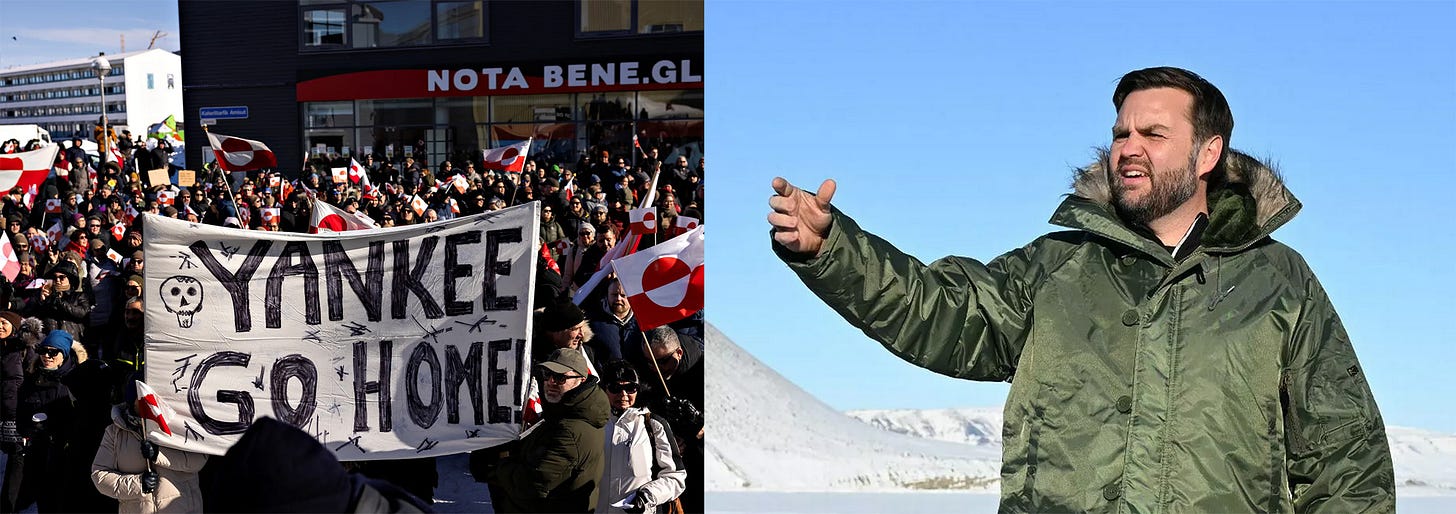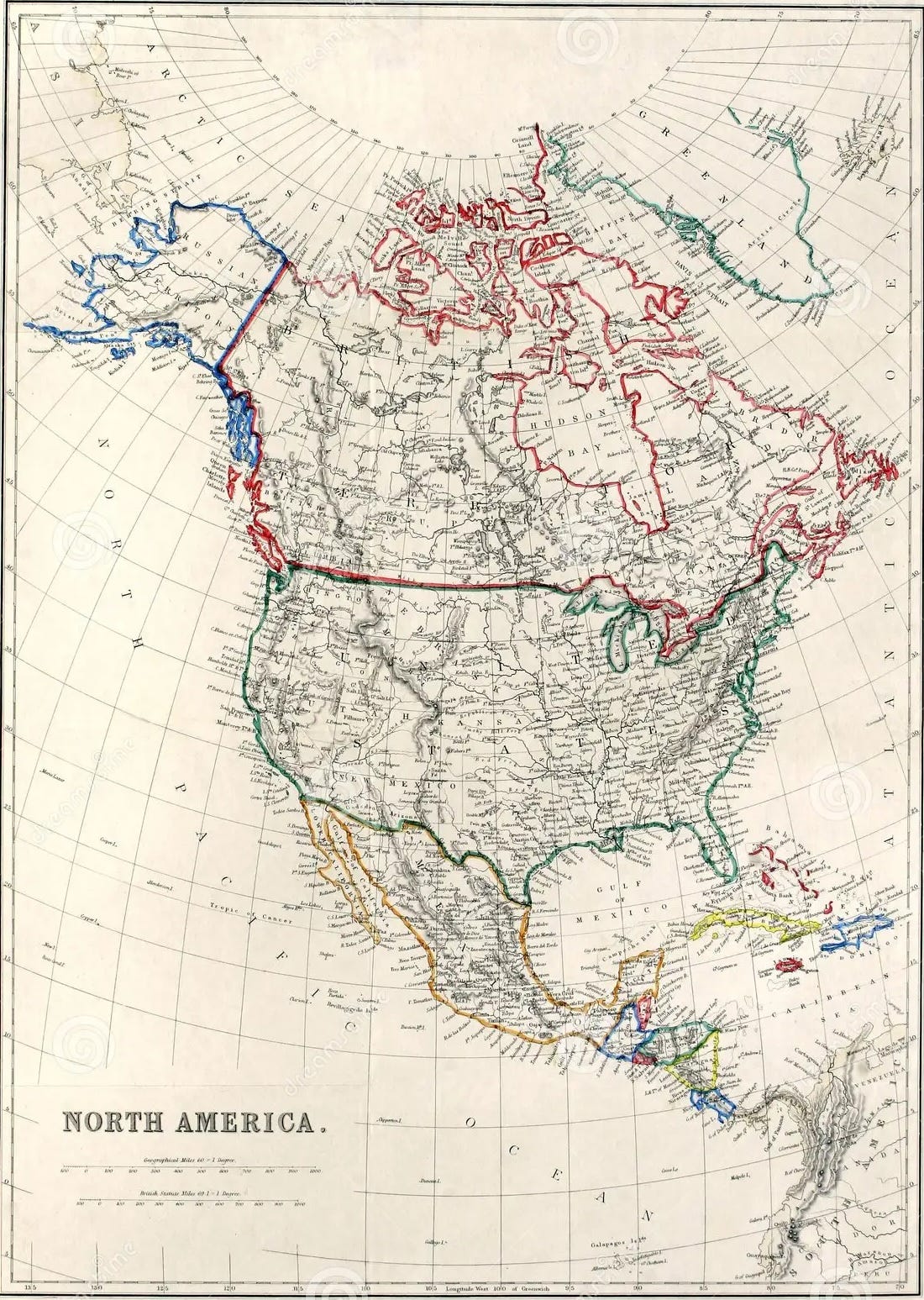On a frigid late-March afternoon at a remote U.S. outpost in northern Greenland, U.S. Vice President JD Vance stood before a formation of American airmen and delivered an unusually blunt message to one of Washington’s longstanding allies. “You have underinvested in the people of Greenland, and you have underinvested in the security architecture of this incredible, beautiful landmass… That has to change,” Vance declared, in remarks pointed squarely at the government of Denmark (PBS News). He went on to suggest that the United States had “no option” but to take a larger role in Greenland’s security – even encouraging Greenland’s people to consider independence from Denmark so they could “partner with the United States” for their protection and prosperity (PBS News). The vice president’s words, delivered against the backdrop of ice-sheathed mountains and a cobalt Arctic sky, underscored that this was no ordinary goodwill visit. It was the opening salvo of a high-stakes geopolitical gambit in the Arctic – one that has put Greenland, a semi-autonomous Danish territory of just 56,000 people, at the center of a brewing great-power showdown.
(foreignpolicy.com) Vice President Vance and Second Lady Usha Vance pose with U.S. Space Force personnel at Pituffik Space Base in northwest Greenland on March 28, 2025. This unprecedented visit by a sitting U.S. vice president to Greenland came amid tensions over Washington’s designs on the strategic Arctic island.
Vance’s trip – accompanied by his wife, Second Lady Usha Vance, and a cadre of senior U.S. officials – made him the highest-ranking American ever to set foot on Greenland (foreignpolicy.com). Ostensibly centered around a visit to the U.S. Space Force’s Pituffik Space Base (formerly Thule Air Base) on Greenland’s northwest coast, the one-day tour was hastily scaled back from a more ambitious three-day itinerary that had originally included stops in Greenlandic towns and cultural events (foreignpolicy.com). The change of plans came after an uproar in Nuuk and Copenhagen: Greenland’s leaders had bristled at what they viewed as an uninvited and heavy-handed visit, and Denmark’s government warned that the U.S. approach was creating “unacceptable pressure” on its Arctic territory (PBS News). In the end, the vice president’s delegation confined itself to the American base at Pituffik – avoiding any direct encounters with Greenland’s civilian population, many of whom were angered by Washington’s overt interest in their homeland (PBS News).
This dramatic diplomatic flare-up has cast a spotlight on Greenland’s growing significance in global affairs, and on the escalating strategic competition in the Arctic. Once a remote and overlooked fringe of the world, the Arctic is rapidly becoming a theater of superpower rivalry as climate change melts ice barriers and opens access to valuable resources and sea lanes. Greenland, the world’s largest island, is “the nautical gateway to the Arctic and North Atlantic approaches to North America” (POLITICO) (Euronews) – a fact not lost on the United States, nor on its rivals Russia and China. The Trump administration’s decision to dispatch such a high-level delegation to Greenland signals that Washington views this icy expanse as crucial to American interests. As Rebecca Pincus, director of the Polar Institute at the Wilson Center, noted of the Vance visit: “That’s an indication that Greenland is up on the policy agenda” (foreignpolicy.com). But Washington’s Arctic ambitions are meeting stiff resistance from Greenlandic and Danish officials who fear their land is becoming a pawn in a new great game. This deep dive explores the implications of Vice President Vance’s Greenland mission: the strategic calculus driving U.S. interest, Greenland’s perspective and historical context, and how this episode could reverberate across international relations – from Arctic governance to NATO unity – in the years ahead.
Greenland’s Strategic Rise in a Warming Arctic
For most of the postwar era, the Arctic was a relatively tranquil zone of cooperation, scientific research, and low tension. That era is emphatically over. Climate change is quite literally reshaping the map of the far north: as rising temperatures thin the polar ice, previously inaccessible areas are opening up. A “Northwest Passage” for global shipping, long the stuff of explorer legend, is becoming reality, and nations are racing to secure footholds in the region’s abundant natural resources (AP News). “Let us be clear: we are soon entering the Arctic Century, and its most defining feature will be Greenland’s meteoric rise, sustained prominence and ubiquitous influence,” says Dwayne Menezes, managing director of the Polar Research and Policy Initiative (AP News). In other words, Greenland is no longer geopolitically peripheral – it is becoming central.
Several factors explain why world powers increasingly view Greenland as a strategic prize:
Geography: Greenland’s location is uniquely pivotal. The island sits at the crossroads of North America, Europe, and the Arctic Ocean (AP News). It guards the approaches to the Arctic from the Atlantic side and anchors the “GIUK gap” (Greenland-Iceland-UK) – a historically important naval choke point for transatlantic shipping and submarine routes. Over two-thirds of Greenland lies above the Arctic Circle (AP News), placing it on the front line of any military or commercial activity in the high north. Ever since World War II, when U.S. forces occupied Greenland to prevent Nazi incursions, control of this territory has been seen as vital to the defense of North America and North Atlantic shipping lanes (AP News). Its strategic position is the reason the U.S. established the Thule/Pituffik air base in 1951 and has maintained a military presence there for over 70 years.
Natural Resources: Beneath Greenland’s ice and tundra lie untapped mineral riches. The island is believed to hold substantial deposits of rare earth elements, along with zinc, uranium, iron ore, and potentially oil and gas. Rare earth metals – a group of 17 elements critical to high-tech industries and defense – are a particularly hot commodity. Today, China dominates global rare earth production and processing, alarming U.S. policymakers who fear supply chain vulnerabilities (foreignpolicy.com). Greenland “sits atop vast reserves of rare-earth elements,” noted Sen. Ted Cruz in advocating for closer U.S.-Greenland ties; access to these resources could “significantly reduce our dependence on…China” (foreignpolicy.com). This has not gone unnoticed in Beijing, which in past years sought to invest in Greenland’s mining sector. (A Chinese-backed rare earth mine project in southern Greenland stalled out after local authorities banned uranium mining, reflecting the complex politics of resource development (AP News).) Beyond rare earths, the broader Arctic region is estimated to hold up to one-fourth of the world’s undiscovered oil and gas reserves (POLITICO) (Euronews) – another magnet for interest as traditional reserves are depleted elsewhere.
Climate and Fisheries: Ironically, while climate change is driving the scramble for Arctic resources, it also puts Greenland on the front lines of environmental impact. The rapidly melting Greenland ice sheet is a major contributor to global sea level rise, and the region’s fragile ecosystems face disruption. These challenges have made Greenland a focus of climate research (and, potentially, climate mitigation funding), drawing scientists and policymakers northward. Additionally, as Arctic waters warm, fish stocks like Atlantic cod and shrimp may move further north, meaning Greenland’s fisheries could grow in importance. Global powers eyeing food security and protein sources have another reason to pay attention to Greenland’s maritime exclusive economic zone.
⠀In short, Greenland holds a unique strategic trifecta: a valuable location for military defense and shipping, a repository of critical minerals, and a front line in climate and environmental stakes. “A region that was previously inaccessible is now becoming the playground of great-power politics,” as Malte Humpert of The Arctic Institute puts it (foreignpolicy.com). That backdrop sets the stage for why the United States – alongside rivals like Russia and China – is stepping up its game in Greenland.
Washington’s Arctic Ambitions Renewed
For the United States, interest in Greenland is not new – but it has never been pursued as overtly as it is today under the Trump administration’s second term. President Donald Trump has made no secret of his desire to bring Greenland closer to the U.S. orbit, reviving a notion that first surfaced in American strategic thinking over 150 years ago (POLITICO). In the 19th century, after the U.S. acquired Alaska from Russia, some U.S. officials eyed Greenland (and nearby Iceland) as the next pieces in a grand Arctic puzzle of American territory. In 1946, the United States formally offered to buy Greenland from Denmark for $100 million – an offer Copenhagen firmly rejected (POLITICO). Failing that, the U.S. negotiated base rights and a defense treaty, establishing Thule Air Base at Greenland’s northwest tip during the Cold War. That base (recently renamed Pituffik Space Base) remains a linchpin of U.S. early-warning radar and space surveillance systems to this day (Euronews), underscoring Greenland’s continued role in U.S. defense strategy.
Now, with Arctic geopolitics heating up, Washington is doubling down on Greenland. President Trump’s fascination with acquiring the island, once dismissed as fanciful, has translated into concrete policy moves. In 2019, Trump openly floated the idea of purchasing Greenland – only to be rebuffed by Denmark’s Prime Minister Mette Frederiksen, who called the notion “absurd,” prompting an indignant Trump to cancel a state visit to Copenhagen in retaliation (POLITICO). At the time, many observers thought the episode was a bizarre one-off. No one is laughing now. Since winning re-election in 2024, Trump has “restated vigorously” his view that the U.S. should somehow gain control of Greenland (AP News). “We’ll go as far as we have to go. We need Greenland,” Trump told reporters, framing the island as essential to U.S. “international security” (foreignpolicy.com) (PBS News). He pointed to the rising Chinese and Russian activity in the Arctic as justification, arguing that “if we don’t have Greenland, we can’t have great international security” (foreignpolicy.com).
Keep reading with a 7-day free trial
Subscribe to Morning Truth to keep reading this post and get 7 days of free access to the full post archives.







